
Why do transmission lines carry such high voltages?
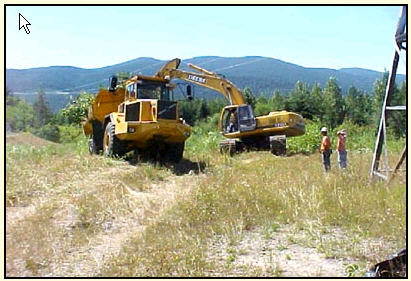
Line Construction is a Big Ecological Footprint!

Why do transmission lines carry such high voltages?

Line Construction is a Big Ecological Footprint!

Consider the following hypothetical (and non-physical) situation:

 I = P/V
I = P/V  I =
10000/120 = 83 amps would therefore flow as current through this
120 V distribution system.
I =
10000/120 = 83 amps would therefore flow as current through this
120 V distribution system.
 therefore P/I = I x R or P =I2R
therefore P/I = I x R or P =I2R
 Heat dissipation is energy lost
by the system. This loss is unavoidable!
Heat dissipation is energy lost
by the system. This loss is unavoidable!
 which the consumer would pay for
which the consumer would pay for
Current = Power/Voltage; If we increase V by a factor of 10, then I lowers by a factor of 10 (at constant power) and the power dissipated as heat lowers by a factor of 102.
Hence if we increase 120 Volts to 1200 Volts we have only 69.4 watts of
energy loss and a 99%
energy efficient delivery system  This is why
high voltage (typically 115-230 thousand Volts or kiloVolts) transmission
lines are required to delivery electricity from central generating
sources (e.g. a hydroelectric dam) to consumers/grids hundreds of miles
away.
This is why
high voltage (typically 115-230 thousand Volts or kiloVolts) transmission
lines are required to delivery electricity from central generating
sources (e.g. a hydroelectric dam) to consumers/grids hundreds of miles
away.
But you don't want 115 KV coming into your house:
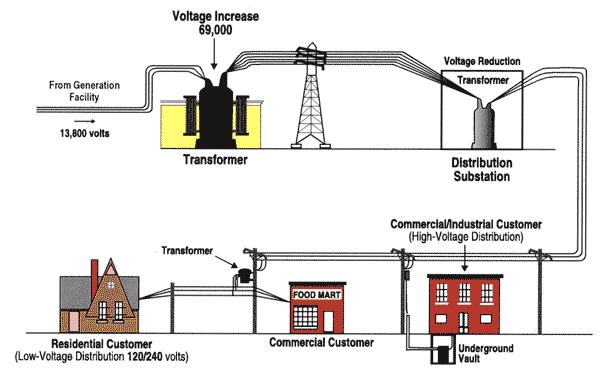
 Use a Transformer
Use a Transformer
 A transformer is a simple device that works
by the process of magnetic induction between two coils of wire; a primary coil (P) and a
secondary coil (S). Transformers must therefore contain an Iron core for this magnetic induction
to work and this is why they are big and heavy. The total voltage reduction is just related
to the ratio of the number of "coils" in the Primary to the number of coils in the Secondary.
When the number of primary coils exceeds that of the number of secondary coils, the voltages
are stepped down. In general this step down factor is around 100 to 1000, which which requires
fairly large individual transformers.
A transformer is a simple device that works
by the process of magnetic induction between two coils of wire; a primary coil (P) and a
secondary coil (S). Transformers must therefore contain an Iron core for this magnetic induction
to work and this is why they are big and heavy. The total voltage reduction is just related
to the ratio of the number of "coils" in the Primary to the number of coils in the Secondary.
When the number of primary coils exceeds that of the number of secondary coils, the voltages
are stepped down. In general this step down factor is around 100 to 1000, which which requires
fairly large individual transformers.

This is why a typical electricity substation is large:


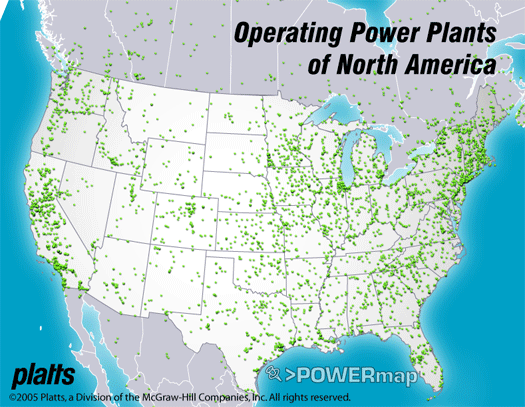
Locally, BPA is transmission line limited in terms of
customer service and
New Federal Stimulus money is targetted at some new Transmission:
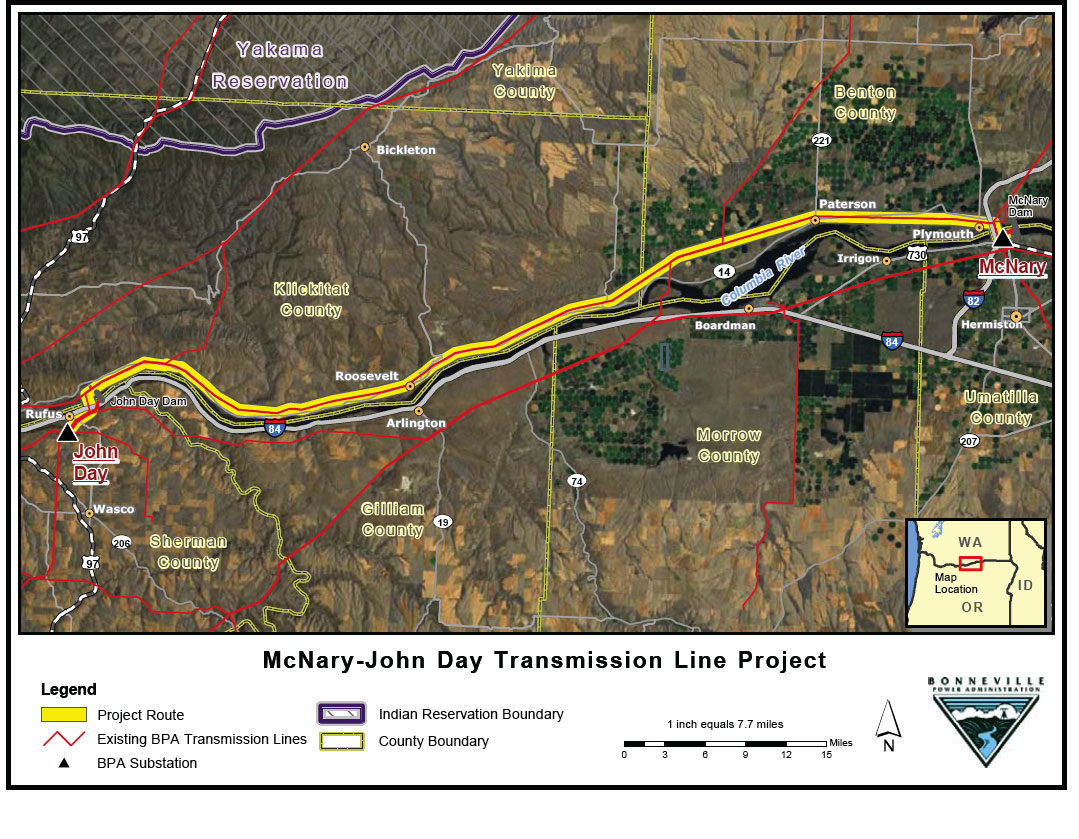
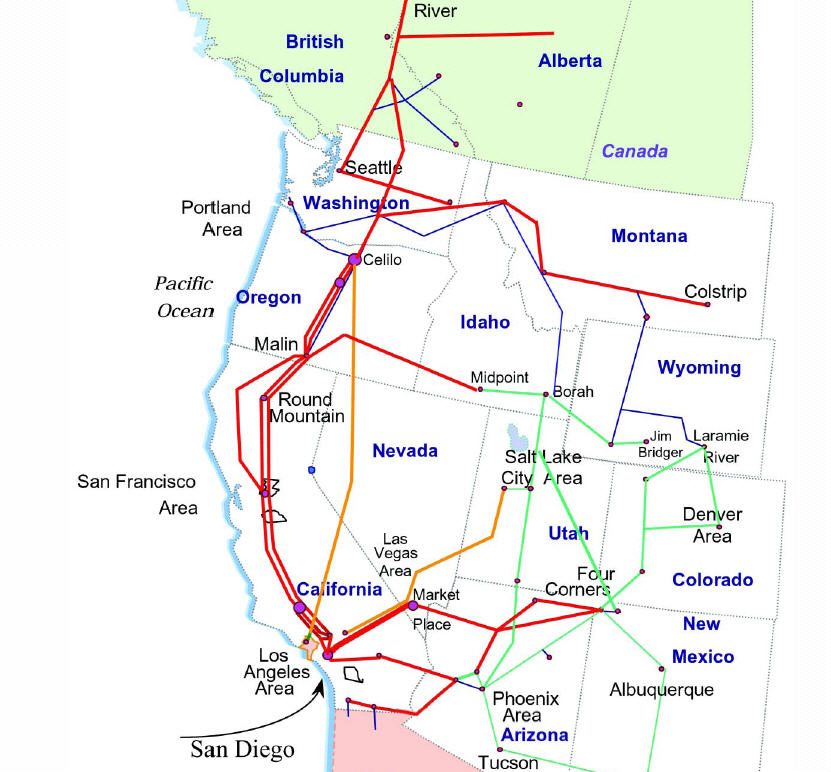
Now transmission line costs are 1-1.5 million dollars per mile!
 this costs must be passed on to the consumer for
any regional utility to stay in business. There is now a serious
congressional effort to reduce transmission line costs.
this costs must be passed on to the consumer for
any regional utility to stay in business. There is now a serious
congressional effort to reduce transmission line costs.
But installing large scale transmission lines remains environmentally controversial. Below is an example of a current controversy that would involve the delivery of 500 - 1000 MW of solar power (that's a lot) directly to San Diego.
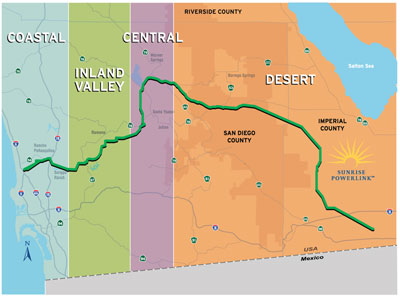


Sunrise Powerlink (Controversy Resolved)
